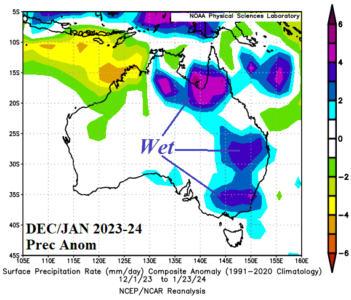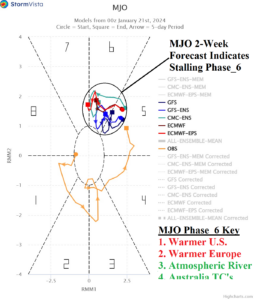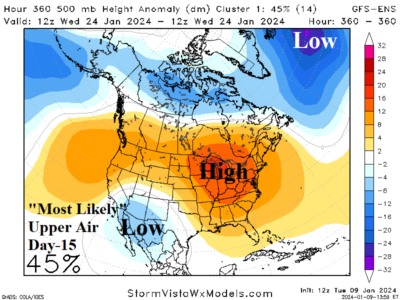01/28/2024, 1:08 pm EST
Marine heat waves (MHW) southwest and east of Australia are strengthening during the summer season so far and affecting the prevailing upper air pattern governing the attendant Australian climate. The precipitation climate across Australia so far this summer season is much different from a typical El Nino climate!
![Climate-Impact-Company-logo-sm[1]](https://climateimpactcompany.com/wp-content/uploads/2023/08/Climate-Impact-Company-logo-sm1.png)



